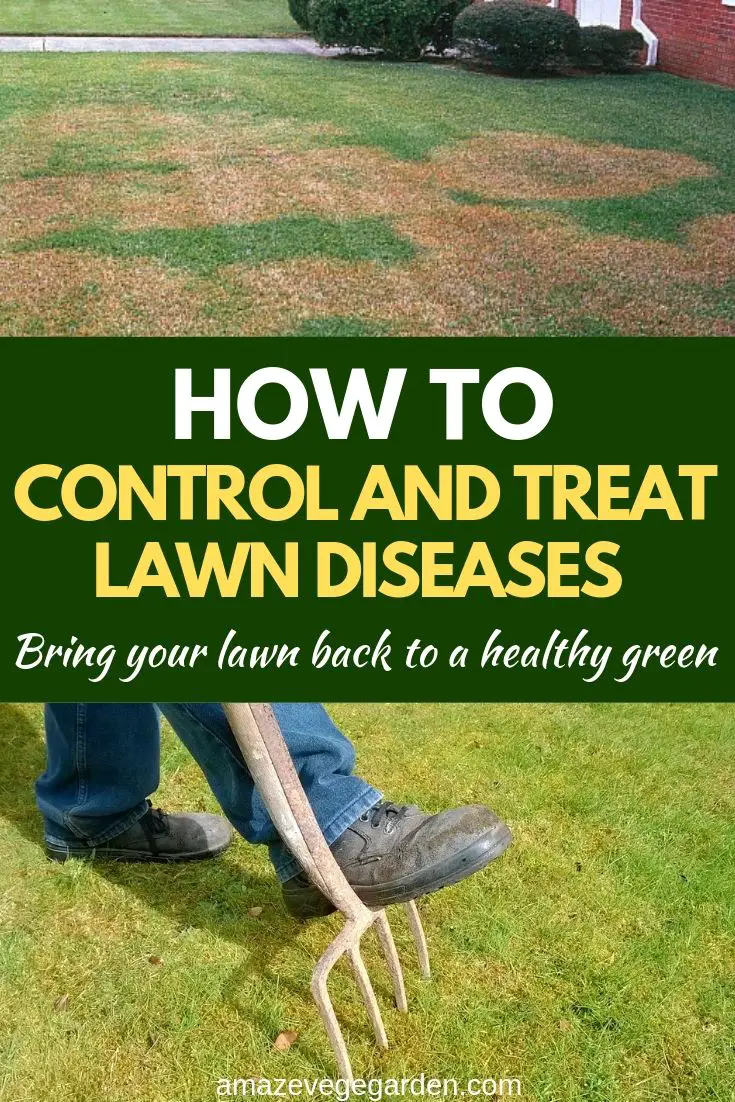Keeping your lawn healthy takes work and effort. And, recognizing the problem goes a long way towards solving it. Here are some tips on recognizing problems and the solutions you can use to get your lawn healthy and green again.
Brown Patches In Lawn
Many people have the same question asking: “Why is my lawn brown?” Well, generally, this can be caused by brown patches, which are common in many lawns. These brown spot diseases are circular brown spots that can range from 1 inch to several feet.
The grass will look brown and water-soaked at first. Then, they will dry out. This lawn problem is most common when the humidity and night temperatures are high.
To get rid of this disease, you will need to water in the mornings only. Lawn lime will also help. Do not leave clippings on the lawn, as this is an environment that fungi will enjoy. If it is possible, reduce the shade on your lawn.
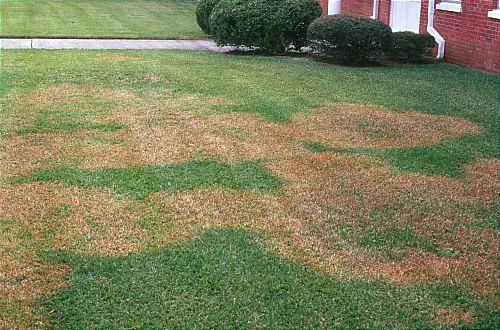
Cottony Blight
Cottony blight is common in lawn grasses with damp soil in areas that are hot and humid. If you see fungi that are cottony in appearance, your lawn has this disease. It is easiest to see in the dampness of the early morning. The best remedy is to reduce the nitrogen, improve the drainage and increase circulation.
The circulation can be increased by pruning or thinning shrubs in the surrounding area. You will also need to reseed the affected area.
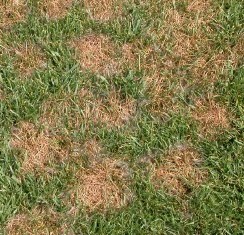
Fairy Rings
Fairy rings are circular rings that can range from a few inches to 50 feet in diameter. This fungus does not attack the grass. It interferes with the roots. It will prevent the root system from taking in water, oxygen, and nutrients.
You can control this lawn disease by soaking and feeding the area. The only cure is replacing the sod or fumigating. These remedies are expensive, so it is best to keep the area watered and fertilized.
The circle will get bigger every year if left untreated. This is not a serious problem, but more of a cosmetic one. Treatment: Apply ample amounts of water, and use a good fertilizer to stabilize the root system.
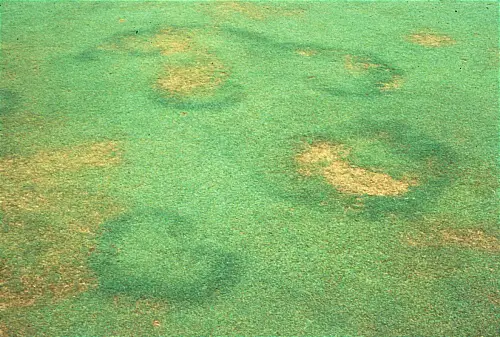
Fusarium Blight
A common disease that may afflict your lawn is Fusarium blight. It is most common in the central and northeast states of the US. It can be detected by small tan spots that will appear in early summer. It is best to prevent this disease rather than try to cure it. Use seed or sod that are resistant to blight. Be sure to water your lawn thoroughly.
Rhizoctonia
Yellow Patch, also known as Rhizoctonia, is one of the most common lawn diseases around. It’s more commonly seen in Kentucky Bluegrass, although you can find it in many other various kinds of grass. This disease usually occurs in cold, wet weather.
It looks like patches of yellow and light green throughout the grass. Treatment for this: Improve the soil irritations, and maintain the water drainage. You will also want to apply a fungicide to the lawn.
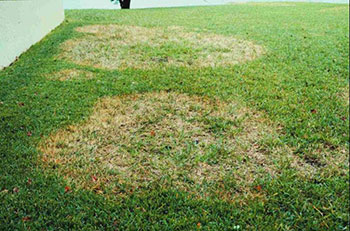
Necrotic Ring Patch
Necrotic Ring Patch is another common lawn disease of the Kentucky Bluegrass. It looks like circular donut-shaped round patches of dead grass. The color ranges from light green to yellow straw-covered spots.
Treatments:
Maintain the turf at the height of 2 ½ to 3 inches. Remove no more than 1/3rd of the blade at any one mowing. Do not apply an excess amount of Nitrogen fertilizers. This can worsen the situation. Also, you will want to avoid overwatering and apply a fungicide product to help kill the disease.
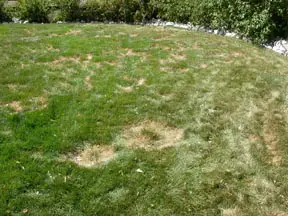
Moss and Algae
Moss and Algae are other common lawn diseases. You can control this easily by having adequate drainage and increasing air intensity throughout the lawn. You can also find chemical controls for moss at your local home store.
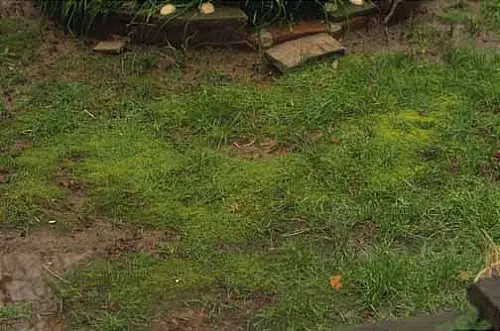
Dollar Spot Fungus
Dollar spots can start as small brown or straw-colored spots about the size of silver dollars. They can spread and are most common in the early summer and early autumn with humid conditions. It can get worse if lawns are lacking the nutrients necessary for growth.
It is not a difficult task for you to discover and take care of dollar spot fungus. Such lawn fungus having its name due to the straw-colored, silver dollar-sized spots that you spotted in the yard.
When inspecting the symptoms of dollar spot fungus, you should look at the other areas other than the infected spots, especially those fringe areas. Check if any of the healthy substance and section starts getting unhealthy, and then carry out the full analysis on all levels of the dollar spot fungus disease.
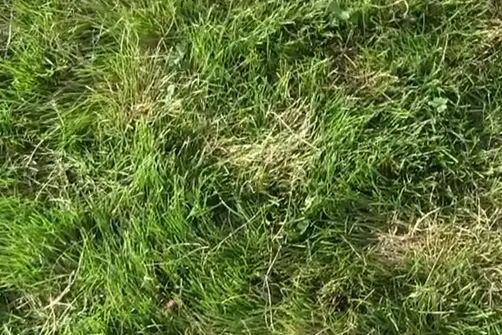
Invasive Plant & Kudzu Removal Tips
Warm, humid weather creates the perfect environment for kudzu to grow. And when it grows, it seems never to stop. As temperatures rise in the southeastern United States, the green blanket of kudzu growth will soon envelop hundreds of acres of land in areas like Roswell, Georgia.
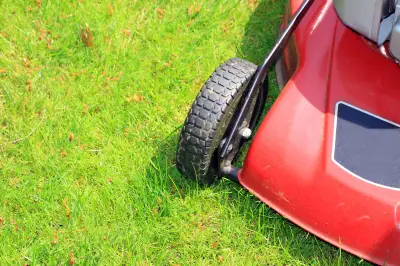
The invasive vine has been troublesome for property owners throughout the subtropical areas of America since the late 1800s, when it was introduced as an ornamental plant for shade cover in New Orleans. It spread from New Orleans to other areas of the south as the perfect solution for soil erosion.
Now, kudzu is seen as a menace and a stubborn one at that. Kudzu removal attempts range from spraying it with herbicides before it shrouds other plant species or mowing it down – only to watch it creep back – are nearly futile.
Invasive Plants
Kudzu is described as an invasive plant not native to the United States, which means that it does not have any environmental factors, such as predators, to keep it under control. Thus, when temperatures are ideal, it grows without bounds.
The vine originated from southern Asia, an area of the world with similar subtropical temperatures indicative of the southern US. In fact, states like Mississippi, Alabama, and Georgia are plagued with the plant because of analogous climates.
The tenacious plant engulfs nearby shrubs, trees, and underbrush with little resistance. Comparable to wisteria, it quickly climbs tall trees – typically pines – to reach the sun’s rays and soak up any rainfall.
What was once a majestic tree in the fall has now become an anchor for kudzu’s sprawling vines, making a forest look more like a jungle through the hot months of the south. The growing season is typically June-October, which is plenty of time for healthy trees to become husks of their former beauty.
Common Removal Methods
Though common methods of mowing or clipping kudzu vines effectively keep them at bay during the growing season, they are only temporary.
Herbicides have succeeded in combating future growth, but the amount needed to eradicate several hundred acres of growth is enormous and becomes quite costly. It can also take years of dousing the vine’s root system with large quantities of herbicides actually to see results.
New Resolutions
But, some landscapers have become quite creative in their kudzu removal methods. Soil solarization is a chemical method of kudzu removal that proves more effective than herbicides and is safer to use than dangerous pesticides. The method involves solar-generated heating in the soil to kill the root system.
In essence, the micronutrients and macronutrients in the soil are afflicted, and potassium increases. The best way to eradicate kudzu is to destroy the root crown, which lies beneath the surface.
Outside of mowing or spraying kudzu, the most effective way to destroy the plant is to remove the root crown. And, because it seems to be the king of the south, it only fits to remove its crown. The hard and fast of it is, there’s a way to get rid of kudzu, but it’s no easy task.
Read also: Peony’s Diseases, Wilt, Mold, and Viruses
How To Improve Your Lawn?
By seeing the lawn disease pictures above, you may now be keen to know how to taking good care of your lawn. If you want to know how to keep your lawn remain healthy all the time, along with the many lawn maintenances, and care, you always need to remember to :
- Adequately water the lawn. Do not overwater.
- Try to aerate the grass yearly.
- Use a good nitrogen fertilizer once or twice a year. No more than that because it will kill the lawn.
- Use a good weed control chemical that will maintain the weeds but not kill the lawn.
Essential Lawn Care Tips
Golfing lawns, football pitches, and cricket grounds all have excellent quality grass, which many gardeners home to achieve in their back yards. Yet keeping a good lawn is more than throwing out some grass seeds and letting the rain do its work: your lawn needs the same level of care as your roses do, so here we have collated a list of lawn care tips to help you get the lawn you want:

1. Soil Ph levels
One of the most common culprits to bad lawn growth is the ph levels of the soil. The soil in your garden is just as prone to collecting pollutants and harmful chemicals that make a poor breeding ground for grass in much the same as flowers.
To make sure you are using the right products and treatments for your lawn, you must start in the best possible way by measuring and checking the ph levels of the soil your grass is growing on.
This is easily done by contacting your local eco advisory service or board, who will give you a sample bag to take a test of your lawn and respond to you with the correct products you will need to restore the soil to optimum nutrient levels that you need for healthy grass to grow.
2. Watering
Many gardeners will know that it’s a good idea to put the sprinklers on when the weather becomes dry, but what many do not know is that watering your grass in the morning gives it the best chance for healthy growth.
Overwatering can also be as harmful as under-watering, so if you have watered your grass, wait for it to dry before watering it again to make sure you are not drowning your grass.
3. Mowing
Moving the grass is another must do to keep it healthy. Rather than letting your grass grow to dangerous levels and then cutting it as short as possible to save time and energy, it is better to mow your lawn regularly to around an inch or two high, which is the optimum height for healthy grass to grow.
Cut shorter than this, and the roots of your grass will be overexposed to sunlight and pollutants, leaving the grass to grow too long. The shade of the longer blades of grass will underexpose the roots to the sunlight, water, and nutrients it needs: both overgrowth and overcutting will lead to the same conclusion: death to your grass.
4. Nutrients for your grass
Just like flowers, grass needs nutrients to thrive, and so if you are treating weeds and other unwanted visitors to your lawn with harsh chemicals, you are polluting your grass with the same chemical.
To balance out the treatments you are putting on your lawn in the form of weed killer and other harsh treatments, remember to give your grass nutrient.
A cheap and easy way to do this is to scatter mowed grass over your lawn, leaving it to decompose on the grass and fill the soil underneath with valuable nutrients that will help it grow.
Read also:
- How To Get Rid of and Kill Creeping Charlie
- Be Diligent with your Weeding Strategies
